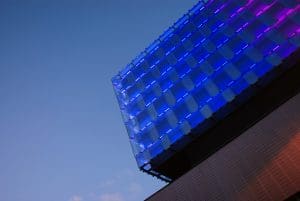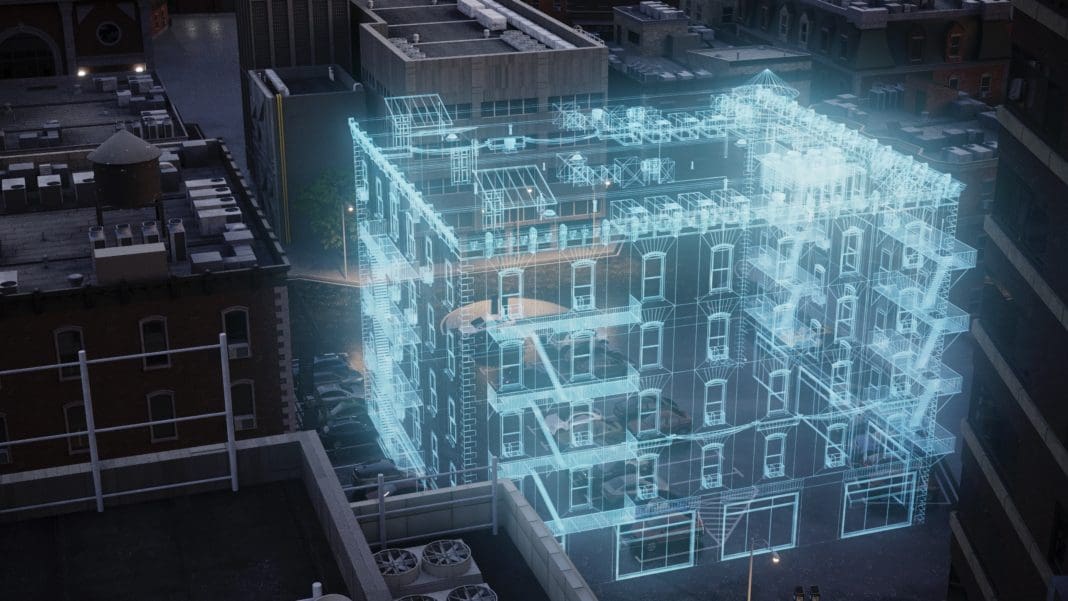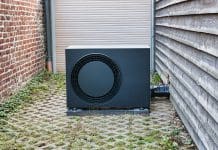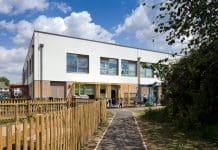Britain’s universities are renowned for their research – but many of the buildings where academics work are inefficient and not fit for the future. A partnership between the University of Liverpool and global climate tech company IES has employed a performance digital twin to create a smarter campus
Many academic institutions in the UK are renowned for their prowess in the fields of research and innovation. But while many universities command leading positions when it comes to pioneering technologies, many of the buildings in which academics conduct their work often operate inefficiently and are not prepared for the changing environments we face in the future.
According to the UK government, around 40% of the UK’s carbon emissions are linked to the built environment. This includes emissions linked to the heating of buildings and the energy they consume to support operations.
University campuses span numerous buildings and significant square footage, therefore reducing their emissions would go some way to making an intervention. There is also an expectation from students. World-leading universities should be ahead of the curve when it comes to addressing their environmental impact.
The challenge that many academic institutions face in decarbonising their premises is that research-intensive and highly populated buildings often consume large amounts of energy.
What’s more, many of our universities have a long heritage and feature historic buildings that can require significant renovation, which can be a costly undertaking.
But the challenge extends far beyond historic architecture. Many period buildings built in the 1960s through to the 1990s also require extensive renovation and refurbishment.
When it comes to investing in this type of work – which will be critical for futureproofing buildings amid a changing climate backdrop while supporting occupant wellbeing and a productive learning environment – implementing a strategy informed by the evidence is key. This is where digital twin technology can help provide the answer.
The University of Liverpool: Using data to drive towards smarter campus operations
This is an area where the University of Liverpool is leading the way, in a concerted effort to shift towards more sustainable campus operations. In a pioneering pilot project with IES, the University of Liverpool is utilising a Performance Digital Twin to better understand and optimise the performance of one of its main campus buildings.
Among the key findings of the project were:
- An estimated 14% of energy savings could be achieved based on simulations of HVAC refurbishment.
- Post-refurbishment, utilising live operational data led to an energy reduction of 23% – exceeding the initial predictions.
- The result was a £25,000 operational cost savings between April and December 2023.
The project serves as an excellent example of a whole-life performance modelling approach, whereby an energy model is created and then taken through several stages and updated with the required data until it is a fully calibrated performance digital twin, with a live connection to the actual building, that can be used to optimise the operational efficiency of the building.
The university has become the first institution to implement IES Live, which enables facilities and sustainability managers to monitor building energy, carbon and cost performance in real time.
The solution connects live data streams from building management systems (BMS), energy meters and sensors to the building’s digital twin, providing facilities managers with a comprehensive view of operational metrics through a user-friendly cloud interface.
IES Live is the first tool to enable this capability, signifying a major breakthrough in the utilisation of energy models throughout a building’s lifecycle.
Creating a performance digital twin
In the early stages of the University of Liverpool project, the IES Virtual Environment (IESVE) was used to create an initial energy model, representing energy flow across spaces and rooms within the building. The model was then calibrated against monthly measured data for 2019 to establish a performance baseline.
The calibrated model allowed the prediction for the baseline energy use and the testing of refurbishment options. Based on the simulations, an estimated 14% energy savings could be achieved from the soon-to-be-chosen HVAC refurbishment.

Real-time reporting: Continuing to learn from a live digital twin
After the building reopened post-refurbishment, the IES Live tool was implemented to enable hourly recalibration against measured data, providing an unprecedented level of operational insight.
By providing the facilities management team with a single pane view of operational performance metrics via the cloud, the result allows both advanced energy and carbon management of the building and live tracking and verification of savings made from the recent refurbishment undertaking on the building.
The live digital twin not only helps track the refurbishment’s impact but also identifies further opportunities for performance optimisation and decarbonisation, resulting in the long-term roadmap for sustainable campus operations.
Verifying energy savings and preventing operational drift
The university can now quantify the refurbishment’s actual energy savings and cost reductions.
Between April and December 2023, the HVAC upgrades led to a 23% reduction in energy consumption and £25,000 in operational cost savings – far exceeding the initial predictions.
The improved accuracy of the live digital twin allowed the university to verify the refurbishment’s true impact more precisely. IES Live also helped to prevent operational drift by flagging performance issues before they can escalate, ensuring sustained energy savings for the long-term future.
Expanding the digital twin approach
Encouraged by the success of the pilot project, the University of Liverpool plans to collaborate further with IES to create digital twins for three additional campus buildings in the next phase of the project.
This scalable approach will support the university’s decision-making along its journey to achieving its goals of net zero emissions by 2025.
The success of the project highlights that sustainability-focused refurbishments can be driven by data and costs can justified before implementing them. Through the use of digital twin technology, decision-makers are empowered to invest in a greener future, safe in the knowledge that any initial outgoings will be outweighed by future savings.
The UK is home to some of the brightest minds from around the world, often leading the fight against climate change. We owe it to them to provide sustainable buildings to work from.
Valeria Ferrando
Associate director
IES
Tel: +44 (0) 141 945 8500
enquiries@iesve.com
www.iesve.com
X
Linkedin
Facebook
YouTube














